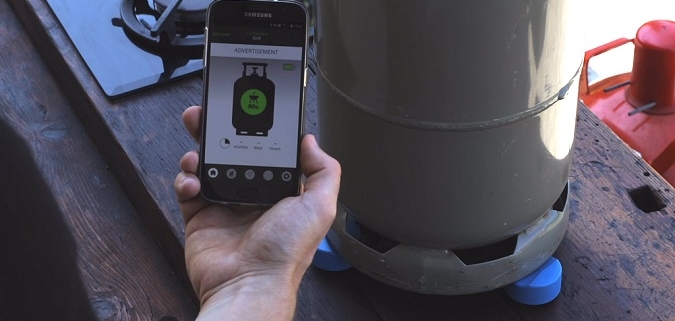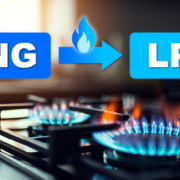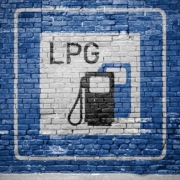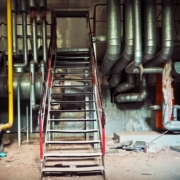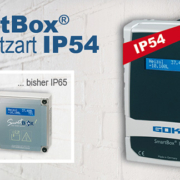How can I measure the filling level of a gas cylinder?
All of a sudden: the gas cylinder is empty! Lucky you if you have a spare cylinder to hand. But experience has shown that an empty cylinder will always catch you off guard, and at the worst possible time. So, what can you do? In the short term: Somehow get your hands on another cylinder. In the medium term: Measure the gas cylinder’s filling level more often. We show two options: analogue and digital.
The first option is rather simple, but it can be carried out quickly and with the easiest means. In order to determine the filling level of the gas cylinder, only a conventional luggage scale is actually required.
Measuring and calculating the filling level in the analogue way
The carrying handle or collar of the gas cylinder is best suited to attach the luggage scale. The scale now specifies the total weight. If you subtract the tare weight of the gas cylinder from this weight, you will discover the actual filling weight.
An example calculation can be found here in this infographic. We assume that the luggage scale shows a total weight of 10.1 kilograms for a gas cylinder with a filling weight of 5 kilograms:
Disadvantage of the analogue method
However, this measurement method has one disadvantage, because you only receive a value in kilograms; on gas equipment such as gas barbecues, gas hobs or outdoor heaters, however, the power is given in kilowatts in most cases. Of course, you can convert kilograms into kilowatts and estimate how long the gas will last.

The weight of the gas cylinder can be measured and calculated with ease using a luggage scale. However, this measuring principle also offers a major disadvantage.
Digital: Senso4s

Digital advantage
On this basis, the Senso4s then transmits the filling level of the gas cylinder in percent by volume to a mobile device, such as your smartphone or tablet PC. The highlight here is: From the second measurement, an algorithm calculates how long the gas in the cylinder will last and makes a forecast.
The more often the Senso4s takes subsequent measurements, the more precise the forecast will be when the gas is running out, as the system can access more data. And the Senso4s carries out a new measurement every 15 minutes and sends the data to the app of the connected user.
If no user is connected to the Senso4s via Bluetooth, the device still measures the filling level every 15 minutes and sends the data to the user the next time the Bluetooth connection is made.
Permissible total weight and maximum diameter
However, the permissible total weight, i.e. filling weight plus tare weight, must not exceed 45 kilograms. For this reason, the Senso4s cannot measure the filling level of a 33-kilogram gas cylinder.
The Senso4s is attached to the base of the gas cylinder. Although the filling level gauge can be extended flexibly, it still has a minimum and maximum diameter. This means that the diameter of the gas cylinder must not be below 18 centimetres or above 32 centimetres. Everything within this diameter range fits on the Senso4s.
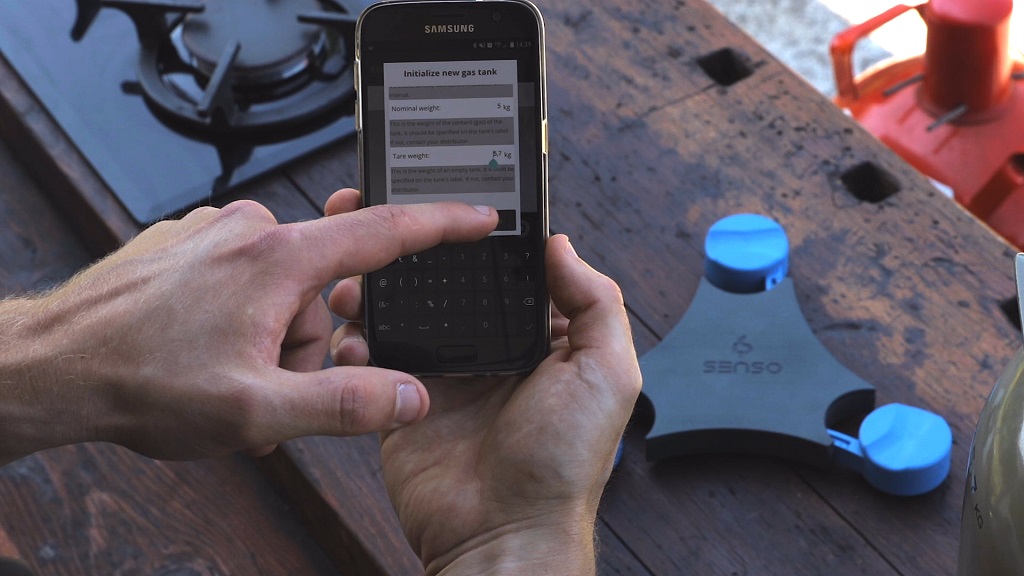
Flexible, digital, easy to use and with additional benefits: The Senso4s helps with monitoring the gas cylinder.
More information about Senso4s
More information on the product page of our website or in the video above linked.
